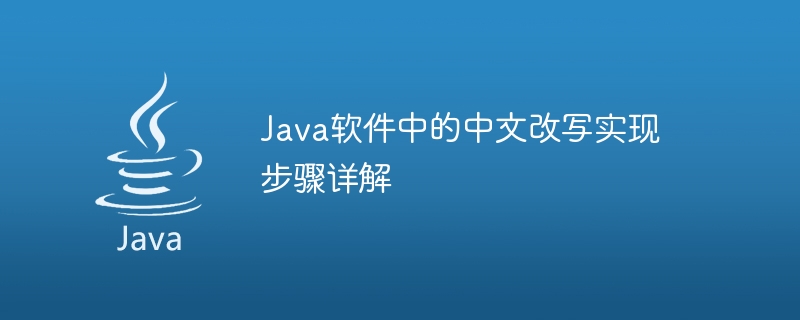

Detailed explanation of the implementation steps of Chinese rewriting in Java software, specific code examples are required
1. Introduction
Chinese rewriting is a text processing technology used to convert Original Chinese text is transformed into adapted text that meets specific needs. In Java software, Chinese rewriting is often used in areas such as search engine optimization, text data cleaning, and natural language processing. This article will introduce in detail the steps to implement Chinese rewriting in Java and provide specific code examples.
2. Chinese rewriting implementation steps
// 去除停用词
String text = "这是一段包含停用词的中文文本";
String[] stopwords = {"这", "是", "一段", "包含"};
for (String word : stopwords) {
text = text.replace(word, "");
}
// 去除标点符号和特殊字符
text = text.replaceAll("[\pP\p{Punct}]", "");
// 将文本转换为小写形式
text = text.toLowerCase();import com.hankcs.hanlp.HanLP;
import java.util.List;
// 对中文文本进行分词
String text = "这是一个中文文本";
List<String> segList = HanLP.segment(text);
// 打印分词结果
for (String word : segList) {
System.out.println(word);
}// 规则替换 String text = "这是一段需要改写的中文文本"; String pattern = "一段"; String replacement = "一篇"; String rewrittenText = text.replace(pattern, replacement);
import java.io.BufferedWriter;
import java.io.FileWriter;
import java.io.IOException;
// 将改写结果写入文件
String rewrittenText = "这是改写生成的中文文本";
String filePath = "output.txt";
try (BufferedWriter writer = new BufferedWriter(new FileWriter(filePath))) {
writer.write(rewrittenText);
} catch (IOException e) {
e.printStackTrace();
}3. Summary
This article introduces the detailed steps to implement Chinese rewriting in Java software and provides specific code examples. . Through the steps of data preprocessing, word segmentation, rewriting generation and output results, the rewriting of Chinese text can be achieved. In practical applications, it is necessary to select appropriate methods and tool libraries according to specific needs to complete the Chinese rewriting task.
The above is the detailed content of Detailed steps to analyze the Chinese rewriting method in Java software. For more information, please follow other related articles on the PHP Chinese website!
 direct3d function is not available
direct3d function is not available
 My computer can't open it by double-clicking it.
My computer can't open it by double-clicking it.
 Introduction to software development tools
Introduction to software development tools
 Usage of Type keyword in Go
Usage of Type keyword in Go
 Introduction to the main work content of the backend
Introduction to the main work content of the backend
 Tutorial on buying and selling Bitcoin on Huobi.com
Tutorial on buying and selling Bitcoin on Huobi.com
 How to use countif function
How to use countif function
 What currency is PROM?
What currency is PROM?




